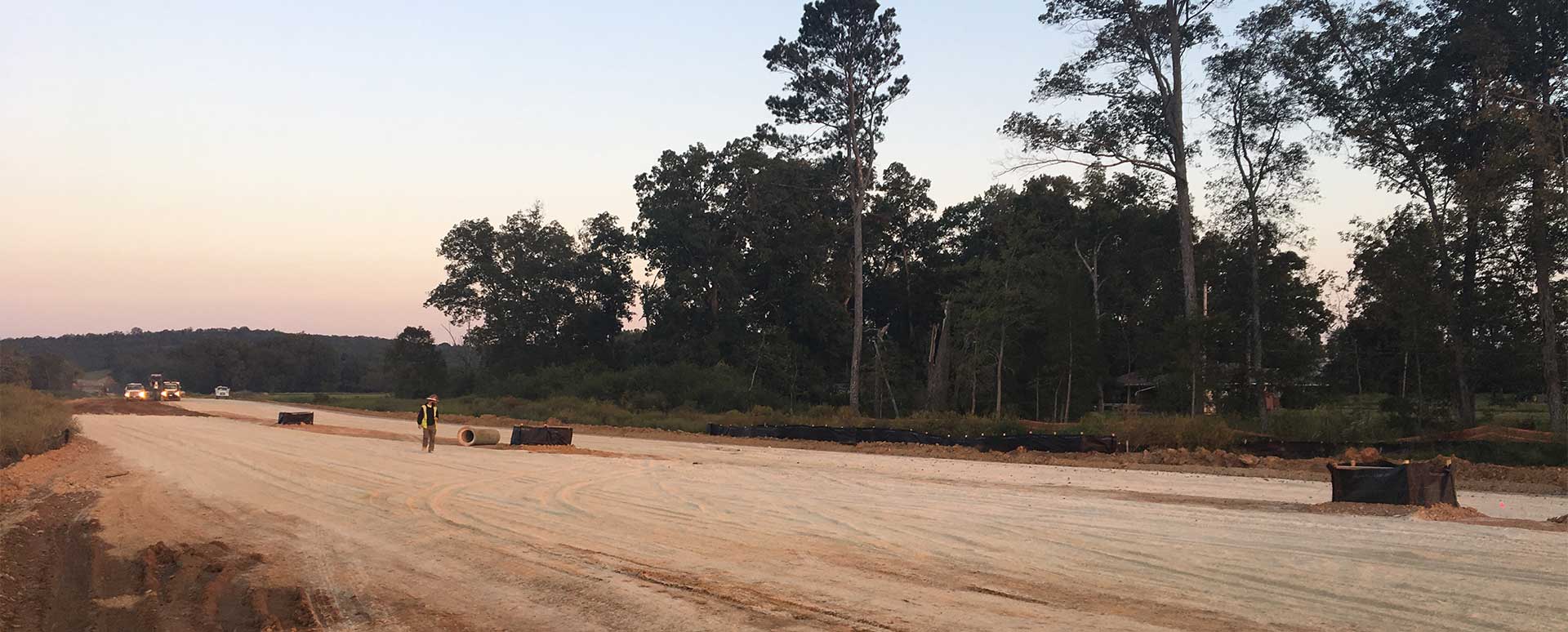Chemical Uses in Soil Treatment

Soil treatment stands as a foundational practice in civil construction projects and environmental remediation endeavors. It involves the adjustment of soil properties to ensure suitability for specific applications. Whether you’re a civil engineer tasked with establishing stable foundations or an environmental scientist working on solidifying and stabilizing heavy metals and contaminants, understanding the various methods and chemicals used for soil treatment is crucial.
Let’s work together.
In this short blog post, we will delve into the essentials of soil treatment, with a particular focus on lime-based products: Quicklime, Hydrated Lime, and Calciment® Lime Kiln Dust (LKD) as well as Portland cement. We’ll analyze how these lime products compare in their roles as soil treatment agents in construction and environmental contexts. Furthermore, we’ll explore how this group of lime products differs from Portland cement in these applications.
Lime-Based Products – Environmental Soil Treatment
While there are some distinctions, there are numerous commonalities with these products. All three —Quicklime, Hydrated Lime, and LKD — are instrumental in immobilizing heavy metals and contaminants within contaminated soil. This immobilization is done through several processes, one of which is the result of their ability to raise the pH of the soil. This increase in pH effects certain contaminates as follows:
- Ion Exchange & Chemical Precipitation: The altered pH causes heavy metals to undergo ion exchange with the calcium ions and other chemical reactions that result in their precipitation as less soluble compounds.
- Solidification & Stabilization: A reaction with soil particles and contaminants to create a solid matrix. This solidification process physically locks heavy metals in place, preventing them from migrating through the soil even if the pH were to change over time.
These processes are used to immobilize contaminates and make them significantly less likely to leach into groundwater or migrate to other areas.
Lime-Based Products – Construction Soil Treatment
Lime-based products are employed in the treatment of construction soils to enhance their engineering properties through a process that includes drying, modification, and stabilization. Quicklime, for instance, is often added to construction soils to reduce their moisture content, aiding in the drying process, and making the soil more workable and allowing for proper compaction. Additionally, lime-based products modify clay bearing soils by reducing their plasticity and shrink-swell potential, and improving their overall workability and suitability. These products are also used to stabilize soil by increasing its load-bearing capacity and reducing its susceptibility to rutting and shifting, ensuring the durability and stability of foundations and infrastructure. Overall, the use of lime-based products in construction soil treatment offers multiple benefits for optimizing soil conditions to meet the specific requirements of construction projects.
Differentiating Lime-Based Products
While they do share a lot of similarities, Quicklime, Hydrated Lime, and LKD each have their ideal application. Quicklime, or calcium oxide, is known for its rapid reactivity, and significant heat generation as it reacts with water, making it ideal for soil stabilization in construction projects. Its high alkalinity allows for swift pH adjustment and solidification of contaminants in environmental remediation where heat and volatiles are not a concern. In contrast, Calciment® Lime Kiln Dust (LKD) can offer a more gradual reaction, providing more precise control over the treatment process which is particularly useful for environmental applications. LKD often stands out for its cost-efficiency and versatility as it is capable to effectively immobilize contaminants, making it valuable for environmental remediation, while also contributing to soil conditioning in civil engineering projects. Hydrated Lime, being fully hydrated, yields no heat generation when in contact with moisture, making it ideal for water treatment or when heat (steam) is otherwise undesirable. Each of these lime-based products plays a vital role, catering to a range of applications in soil treatment, ensuring the stability, safety, and sustainability of construction and environmental endeavors.
Lime-Based Products vs. Portland Cement in Soil Treatment
Lime-based products differ significantly from Portland cement in various aspects. Firstly, their chemical composition primarily consists of calcium compounds, setting them apart from Portland cement which predominately contains calcium silicates and alumina. This chemical divergence influences their size, reactivity, and effectiveness, making lime-based products advantageous for certain soil types (PI>10) and contaminants (e.g., metals). Notably, lime-based products typically exhibit faster and more significant modification of clay bearing soils and better solidification and stabilization of contaminates (due to their higher alkalinity). Portland cement, on the other hand, is very fast setting, allowing it to acquire higher short-term strength, particularly in low PI (<10) soils. Portland cement is also renowned for its ability to develop very high compressive strengths. This makes it an excellent choice when constructing structures that require exceptional load-bearing capacity and structural integrity, but can make subbases too hard, resulting in reflective cracking. Soils treated with both lime-based products or Portland cement often require less maintenance over their lifespan, thanks to the durable and long-lasting properties they provide, which lead to cost savings and less frequent interventions in both construction and environmental projects.
In Conclusion
Soil treatment is an essential element of civil construction projects and environmental remediation efforts. Lime-based products are vital chemicals that transform soil properties to meet the demands of these applications. By selecting the appropriate treatment method—whether it’s a lime-based product, such as Quicklime, or Portland cement—engineers and environmental specialists can optimize soil conditions, ensuring the success of their projects and the protection of the environment.
For more in-depth information on soil treatment and its applications, Mintek Resources can provide valuable insights and guidance. Feel free to reach out to us for further exploration of this fascinating and essential field of study.
We're here to help you find the best solution for your next project. Let's get started. Give me a call at 937-641-9901.

Josh Weser
Mintek Resources
Related Posts
Modernizing Roadbed Construction: Key Updates to Alabama’s Lime Stabilization Specification
The Alabama Department of Transportation (ALDOT) has recently updated its Specification 232 for Lime Stabilized Roadbed, aiming to modernize the standard practices for modifying and stabilizing in-situ soils during roadbed construction.Let's work together. Get Started...
Introducing Construction Quicklime (CQL)
At Mintek, we are committed to addressing the unique challenges faced by the construction industry. Our latest innovation, Construction Quicklime (CQL), is designed to enhance efficiency and ease of use compared to traditional quicklime. CQL stands out due to its...
Understanding Soil Stabilization with Cement and Lime
Creating a strong and stable foundation is essential when constructing buildings, roads, and other infrastructure. However, not all soils are naturally suitable for construction. Some may be too wet, soft, or prone to deformation and settling, which can lead to...